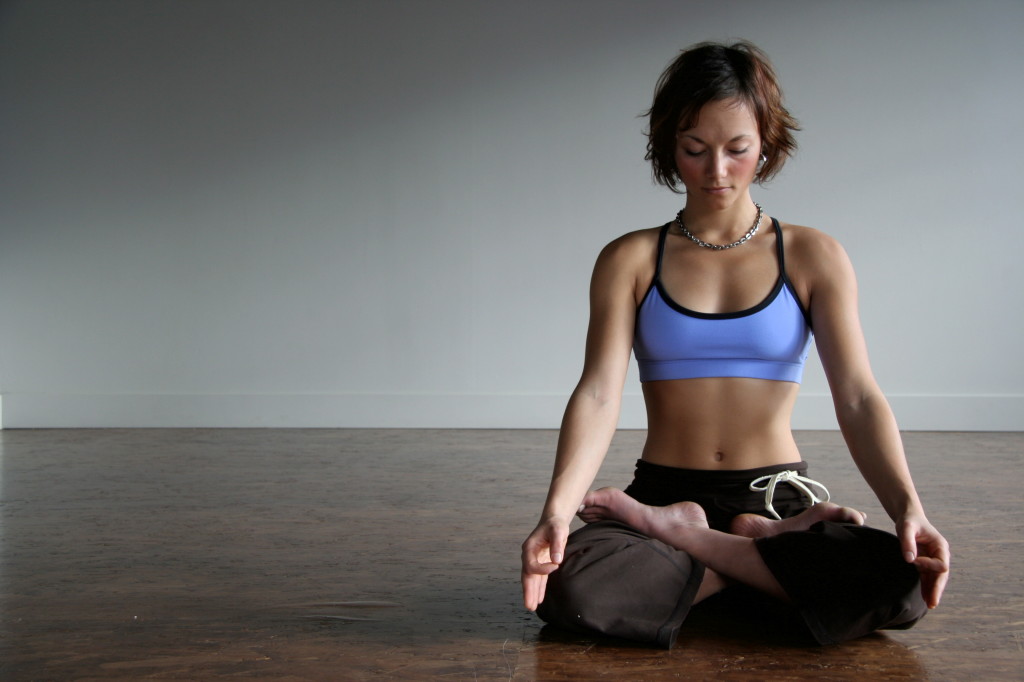Stretch it out

By Kristin Kent
How many times have you heard that yoga’s good for runners? We transcend the hype to find out what the fuss is about.
“So you’re saying cut mileage – for yoga? Right.” This is a typical response Gina Geres gets from seasoned runners itching for their next race. The Edmontonbased runner and yoga instructor says, “You really need to understand this question: Do you want to do this for longevity, or is it going to be lots of miles, lots of injuries, and a short-lived affair?” Good point, but isn’t yoga too slow, boring and whimsical? I mean, all that talk about your third eye. But if you plan to run well into your 80s, you might want to approach yoga as an extension of your training – a means to an uninjured end.
Let’s break down the running motion. Each time your foot strikes, force is transmitted from the ground up. There are a lot of places that force can go, and you want to reduce the force from overloading the joints.
“The more flexible and strong the soft tissue in the kinetic chain (the connection between the muscles and joints – the ligaments), the more that tissue can absorb force adequately,” says Dr. Douglas Stoddard, Sports Medicine Physician and medical director of Toronto Sports Exercise Medicine Institute (semi) and Medion, makers of e-load and emend brands. “Tissue that is too tight is not able to support force and alters the mechanics of the kinetic chain. Yoga helps stretch these tightened tissues,” he says.
So what’s the difference between yoga and stretching? “Nothing,” says Stoddard. “aside from the strength component, philosophies and the structure of classes, that is. If you break it down to what’s exactly going on in the body biomechanically, it’s stretching and elongating muscle and connective tissue.”
Structure is an inescapable part of yoga, and is often a reason for hesitation among runners. But “oms,” chants, prayers and breathing play an important role in your finishing time, too. It’s about achieving a mind-body connection. Competitive runners must be hyper-aware of their own bodies and be capable of identifying the state in which they perform best. That ideal state is made up of physical feelings, thoughts and emotions, which are all connected. If you’re feeling a lot of butterf lies in your stomach, your mind picks up and says, ‘Oh, I have a lot of butterf lies in my stomach.’ If you’re nervous, it may sound something like, ‘Oh my gosh, that’s not good.’ Dr. Judy Goss, a sports psychologist with Canadian Sports Centre Ontario, says that’s how our systems are built.
“If I’m nervous or anxious, I may not notice that I’m carrying one shoulder a little higher, or carrying tension in my body or I may be leaning over a little bit, which throws my hips off, which makes my stride different,” says Goss. “All of those little changes affect performance.”
Goss says working on your breathing is a great way to control focus. “It can teach you to control that nervousness and make it work for you,” she says. “Yoga allows you to focus and block out distractions, which is extremely important for athletes in competition.” So while you may be anxious to get some mileage into your legs, it might be worth it to focus on yoga as part of your training.
Strike a Pose
Some Yoga Exercises For Runners
Downward Dog
Begin in table position with your hands and knees on the f loor. Be sure your hands are under your shoulders and knees are under your hips. Engage your core, elongate and straighten your spine. Exhale and lift your hips toward the ceiling so that your body forms an inverted V. Your arms and legs are now straight, with your fingers and toes spread wide. Pull your shoulders back and away from your ears. If your hamstrings are tight, bend your knees to allow the spine to lengthen fully. Practise pushing your heels toward the f loor.
Pigeon Pose
From the downward dog position, slide your right foot between your hands. Shift it to the left, so that your knee falls to your right. Bring your right shin as parallel to the ground as you can. Stop if you feel discomfort, especially in your knee. Pull your heel closer to your groin to alleviate pressure. At this point, your left leg should be extended straight behind you. Square off your hips, elongate your spine, and work at pushing your pelvis to the ground.
Hamstring Stretch
Lie on your back with your knees bent and your feet f lat on the f loor. Bring your right knee toward your chest and hook a strap or a belt around the ball of your foot. Engage your core and curl your tailbone. Hold the strap ends firmly and slowly straighten your leg. Hold for 30 seconds. Deepen the stretch on your exhalations. Release your leg and switch sides.
Runner’s Lunge
Lunge forward with your right leg and bring the left knee to the ground. Place your palms on either side of your right foot. On your exhalation, straighten your left leg and lift your torso, placing your hands on your hips. Both feet should be facing forward. Square off your hips, engage your core and elongate your spine. Hold for 30 seconds, then switch sides.
This story appeared in a former issue of Canadian Running.



